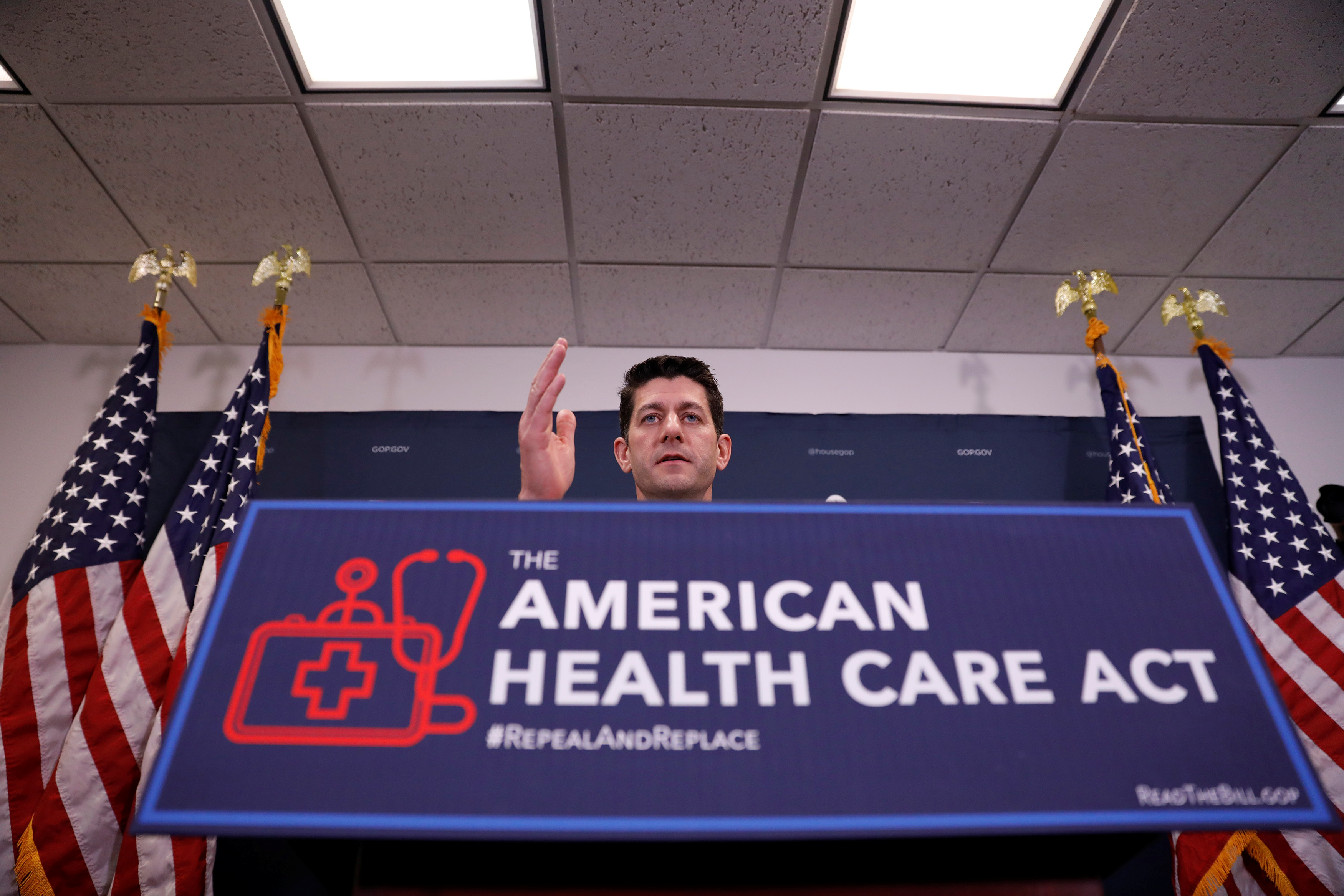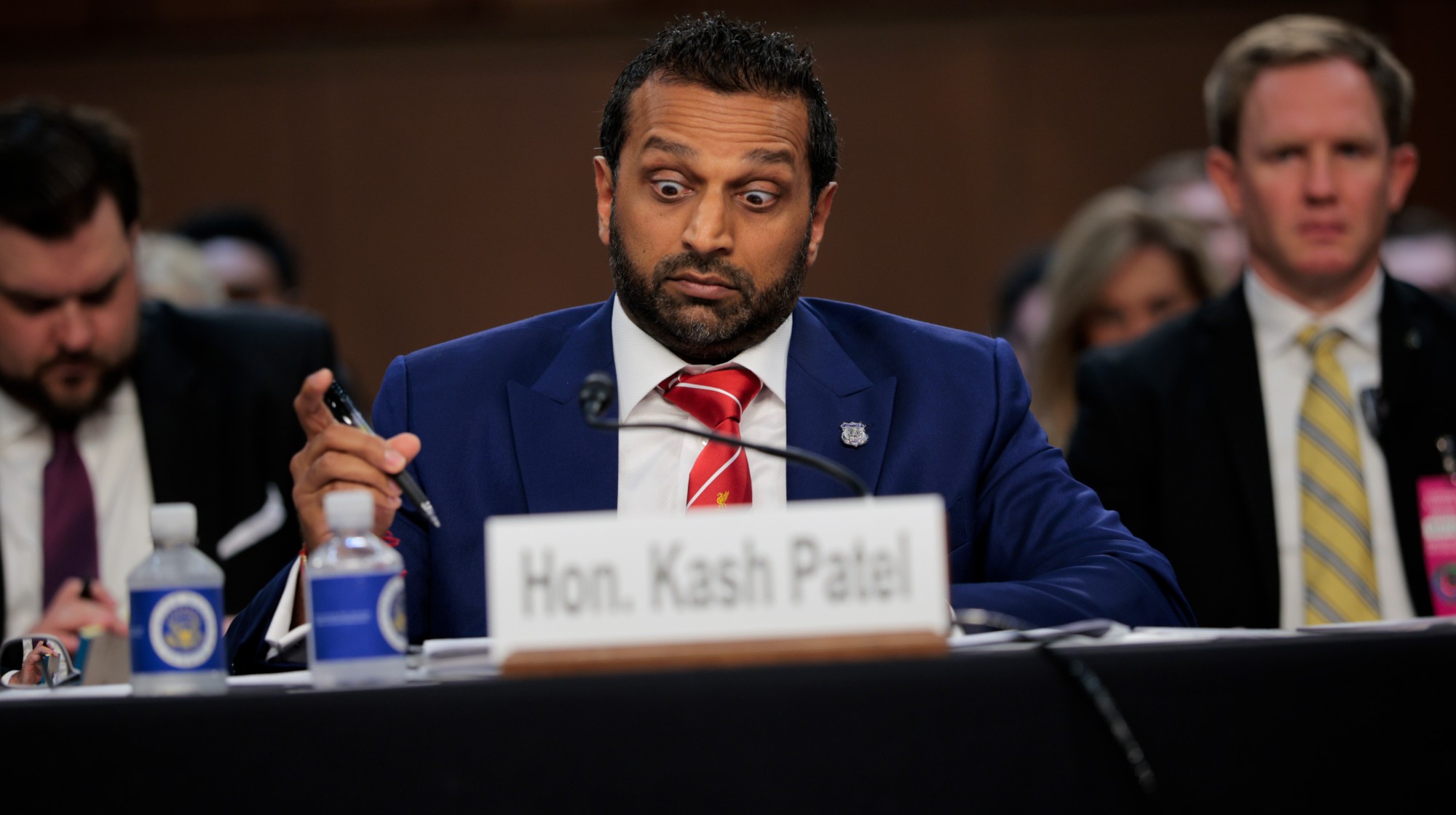The basic economic error in the GOP's health-care plan
Prong two, we have a problem


The Republicans' plan to repeal ObamaCare looks like it may go down in flames.
Their replacement, the American Health Care Act (AHCA), massively cuts the subsidies ObamaCare provides so people can buy individual coverage on the state exchanges. Estimates show premiums would fall somewhat, but not nearly enough to offset the hit to insurance customers. Hence CBO's brutal conclusion that 24 million people would lose insurance by 2026 if the AHCA passes.
The GOP's response? Don't worry, we've got a plan!
The Week
Escape your echo chamber. Get the facts behind the news, plus analysis from multiple perspectives.

Sign up for The Week's Free Newsletters
From our morning news briefing to a weekly Good News Newsletter, get the best of The Week delivered directly to your inbox.
From our morning news briefing to a weekly Good News Newsletter, get the best of The Week delivered directly to your inbox.
Or, more precisely, a "three-pronged" plan, as White House Press Secretary Sean Spicer put it (many, many times) at a press briefing last week.
The first prong is to pass the AHCA via reconciliation. That's a procedural gambit that allows lawmakers to avoid a filibuster in the Senate. But it also requires that lawmakers limit themselves to tax and spending changes. So the AHCA can't undo the myriad regulations ObamaCare imposed on the health insurance industry.
As Vox's Jeff Stein helpfully explained, this leads to the second prong: President Trump's executive branch will just find ways to not enforce ObamaCare's regulations. The third prong is premised on the idea that Democrats will accept their new reality and work with Republicans to pass more extensive fixes with filibuster-proof majorities.
The third prong is ludicrous for political reasons. But I want to focus on the second one, because that's where the real policy action is.
A free daily email with the biggest news stories of the day – and the best features from TheWeek.com
For the AHCA's much stingier subsidies to be enough, premiums have to come down a lot more than the AHCA alone can achieve. The theory is that tossing ObamaCare's regulations over the side will lower them enough. There are enormous practical, political, and legal problems with that scheme: Premiums were rising for years before ObamaCare came around, for instance.
But let's set all that aside and assume Republicans somehow pull this off, and it works the way they want it to.
There's a far more elementary economic error going on here. Basically, conservatives keep getting confused by the difference between the price of health insurance and the price of health care.
Insurers take in money from their customers in the form of premiums, then they use that money to pay for their customers who are sick, plus skim some off the top for administrative costs and profits.
So how can insurers lower premiums? Well, they can find ways to prevent extra sick people form becoming their customers, and thus adding to their costs. Or they can refuse to cover lots of forms of care. Or they can demand their customers pay a bigger share of the costs of the care insurers do cover, through cost-sharing like deductibles and copays.
Americans, of course, hate all those practices. So ObamaCare really cracked down on the first two. But that raised premiums, and even ObamaCare's much more generous subsidies weren't enough to offset them. On top of that, ObamaCare didn't do enough to crack down on cost-sharing. That all gave the GOP an opening to cast ObamaCare as the worst thing that ever happened to America.
Then the GOP walked into its own trap: Getting rid of these regulations will only change the price of health insurance. It won't, by itself, change the price of care. All those surgeries and drugs and MRIs and such that people need will still have huge price tags. And if the money to pay for them isn't coming from insurance, it has to come from government spending directly, or out of individuals' pocketbooks.
The first option is a no-go with Republicans. That leaves Americans to shoulder more of those costs on their own.
That's a poisonous position to take, politically speaking. Higher deductibles and skimpier coverage are the last things Americans want.
But if you're familiar with the health reform debate, you know conservative wonks technically have an answer for this. They argue insurers act as distortionary middle men between customers and their health providers. So higher deductibles and skimpier coverage will remove insurers' influence in a lot of health-care purchases. That will apply market pressure to providers, and force them to bring down the price of health care, too. So the hit to individual pocketbooks will be way smaller and health care will be affordable even without insurance.
When House Speaker Paul Ryan talks about increasing "access" rather than coverage, and Trump budget director Mick Mulvaney pooh-poohs the importance of insurance entirely, they're referring to this theory.
But the wonks never grappled with how most health-care costs are driven by big-ticket expenditures. Just 5 percent of Americans account for half of health-care purchases every year, at roughly $40,000 a pop. There's no conceivable way to remove insurers from those transactions and expose Americans directly to those sorts of costs.
On top of all that, the U.S. health-care system isn't going to turn on a dime. Even if you could apply enough market pressure from individual consumers, it would take years and years for that to grind providers down to sufficiently cheaper prices. During the shift, you'd still have millions of Americans exposed to sky-high health-care costs with no way to pay for them.
If they wanted to make their idea work, conservative wonks could propose a scheme like this: Give every household insurance that requires them to only pay the first $8,000 of their own expenses, with the rest covered by the insurer. Then have government give every household an annual $8,000 subsidy to cover those costs. That would apply the market pressure and protect Americans financially.
But there are 20 million U.S. households who are either uninsured, or who buy coverage individually or on ObamaCare's exchanges. That's $160 billion a year in government spending, just to cover out-of-pocket costs. As for helping people cover their premiums, doing it with the flat tax credit conservatives' prefer is simpler than ObamaCare's targeted system, but also much more expensive. It could become less expensive if premiums fall a lot. But they won't, precisely because even this kind of skimpy coverage leaves the insurer as the middle man in most health care purchases.
So we're probably talking a new government spending program well north of $220 billion a year. Can you imagine the Republican Party ever agreeing to such a thing? Of course not. It makes Bernie Sanders look like a moderate squish.
The conservative wonks never acknowledged how their party's ideology on government spending made their policies unworkable. So their arguments remained undeveloped. Then GOP politicians — who, as politicians, aren't wonks and largely don't understand policy tradeoffs — got ahold of the wonks' arguments and touted them as the solution America was waiting for.
Now Republicans have promised something on health care they can't deliver. And it looks like they're about to pay the price.
Jeff Spross was the economics and business correspondent at TheWeek.com. He was previously a reporter at ThinkProgress.
-
 The curious history of hanging coffins
The curious history of hanging coffinsUnder The Radar Ancient societies in southern China pegged coffins into high cliffsides in burial ritual linked to good fortune
-
 The Trump administration says it deports dangerous criminals. ICE data tells a different story.
The Trump administration says it deports dangerous criminals. ICE data tells a different story.IN THE SPOTLIGHT Arrest data points to an inconvenient truth for the White House’s ongoing deportation agenda
-
 Ex-FBI agents sue Patel over protest firing
Ex-FBI agents sue Patel over protest firingspeed read The former FBI agents were fired for kneeling during a 2020 racial justice protest for ‘apolitical tactical reasons’
-
 Has Zohran Mamdani shown the Democrats how to win again?
Has Zohran Mamdani shown the Democrats how to win again?Today’s Big Question New York City mayoral election touted as victory for left-wing populists but moderate centrist wins elsewhere present more complex path for Democratic Party
-
 Millions turn out for anti-Trump ‘No Kings’ rallies
Millions turn out for anti-Trump ‘No Kings’ ralliesSpeed Read An estimated 7 million people participated, 2 million more than at the first ‘No Kings’ protest in June
-
 Ghislaine Maxwell: angling for a Trump pardon
Ghislaine Maxwell: angling for a Trump pardonTalking Point Convicted sex trafficker's testimony could shed new light on president's links to Jeffrey Epstein
-
 The last words and final moments of 40 presidents
The last words and final moments of 40 presidentsThe Explainer Some are eloquent quotes worthy of the holders of the highest office in the nation, and others... aren't
-
 The JFK files: the truth at last?
The JFK files: the truth at last?In The Spotlight More than 64,000 previously classified documents relating the 1963 assassination of John F. Kennedy have been released by the Trump administration
-
 'Seriously, not literally': how should the world take Donald Trump?
'Seriously, not literally': how should the world take Donald Trump?Today's big question White House rhetoric and reality look likely to become increasingly blurred
-
 Will Trump's 'madman' strategy pay off?
Will Trump's 'madman' strategy pay off?Today's Big Question Incoming US president likes to seem unpredictable but, this time round, world leaders could be wise to his playbook
-
 Democrats vs. Republicans: who are US billionaires backing?
Democrats vs. Republicans: who are US billionaires backing?The Explainer Younger tech titans join 'boys' club throwing money and support' behind President Trump, while older plutocrats quietly rebuke new administration
